Phone:
(701)814-6992
Physical address:
6296 Donnelly Plaza
Ratkeville, Bahamas.
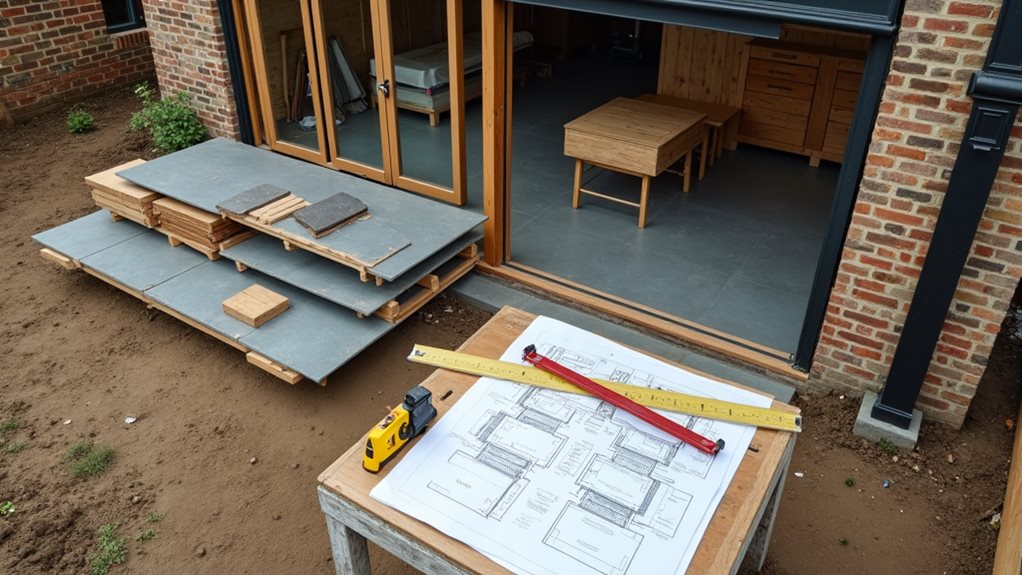
Discover the ten crucial factors that can make or break your rear extension budget before starting your dream renovation project.
Your rear extension's final cost depends on ten essential factors: square footage, material quality, planning permissions, professional fees, site access, utility modifications, regional pricing, structural requirements, interior finishes, and design complexity. While you'll typically spend $1,500-$2,500 per square meter, each element can greatly impact your budget. Understanding these key influences will help you plan effectively and avoid unexpected expenses as you explore your extension project further.
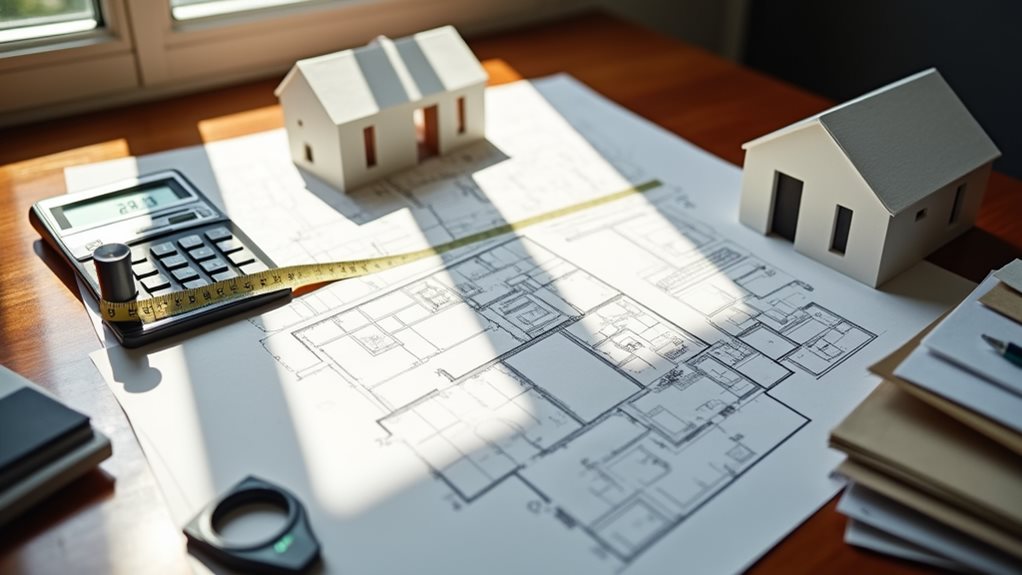
When planning a rear extension, understanding the relationship between square footage and costs will help you make informed decisions about your project's scope.
You'll typically find costs ranging from $1,500 to $2,500 per square meter, with larger extensions sometimes offering better value through economies of scale.
Your layout choices greatly impact both space functionality and overall costs.
While open-plan designs tend to be more cost-effective, they're also excellent for maximizing natural light and creating a sense of flow throughout your home. Additionally, considering the inclusion of skilled professionals can further ensure that your extension meets quality standards.
Layout optimization isn't just about aesthetics – it's about creating a practical living space that works for your lifestyle. Smart design choices that incorporate large sliding doors can create seamless transitions between indoor and outdoor spaces.
You'll want to reflect on how your new extension connects with existing rooms, ensuring the design enhances your home's functionality while staying within your budget parameters.
When you're planning your rear extension, you'll need to weigh the benefits of premium materials against standard options, considering how each choice affects both immediate costs and long-term value.
Your selection of high-end materials like natural stone or hardwood might increase your initial investment by 20-30%, but they often provide superior durability and enhanced property value compared to standard alternatives.
The current volatility in material supply chains can greatly impact both costs and project timelines, so it's worth exploring multiple suppliers and maintaining flexibility in your material choices while staying aligned with your budget constraints. Investing in quality materials can help achieve a higher property value through your extension project.
Choosing between premium and standard materials for your rear extension represents one of the most essential decisions you'll make during the planning phase.
While standard materials offer lower upfront costs, they mightn't provide the best value when you consider material lifespan and long-term cost analysis. Premium materials typically deliver superior durability and reduced maintenance requirements over time.
You'll find that investing in high-quality materials often pays off through enhanced property value and improved energy efficiency.
They're not just about aesthetics – though they'll certainly make your extension look more appealing. You're also investing in sustainability and long-term savings.
When you're weighing your options, consider how premium materials can contribute to your home's overall market value while reducing future maintenance and replacement expenses.
Three major factors have dramatically reshaped the building materials landscape in recent years: global supply chain disruptions, increased demand, and geopolitical events.
You'll notice these changes reflected in your extension costs, with materials like bricks seeing a 20% price increase and glazing costs reaching new heights.
To navigate these challenges, you'll need robust material sourcing strategies.
Consider purchasing materials during sales periods and maintaining close communication with your contractors about supply chain forecasting.
While you can't control global events affecting material availability, you can adapt your approach.
Many homeowners are finding success by planning their material purchases well in advance and staying flexible with alternative options when possible.
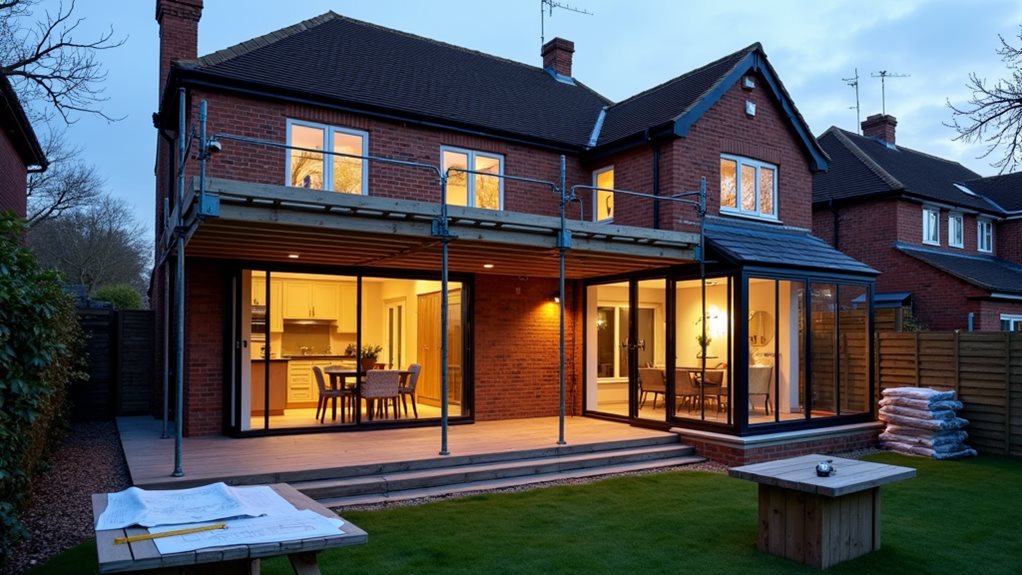
Understanding planning permission requirements is essential before you begin any rear extension project, as regulations vary considerably based on your property type.
If you're living in a detached house, you'll have more flexibility, with permitted development rights allowing extensions up to 4m from the rear wall, or 8m with prior approval.
For semi-detached and terraced homes, you're limited to 3m, or 6m with prior approval.
You'll need to guarantee your extension meets height requirements, with eaves not exceeding 3m and total height staying under 4m.
Remember, if you're in a conservation area or own a listed property, you'll need full planning permission.
Whatever your property type, you can't cover more than 50% of your available land, and materials must match your existing home's appearance.
When planning your rear extension, you'll need to factor in both architect fees, which typically range from £50-£100 per hour, and structural engineer costs for essential calculations and drawings.
You'll find that skilled contractors' rates vary considerably based on your location and project complexity, with London-based professionals often charging premium rates.
Managing these professional and labor costs effectively means getting multiple quotes, clearly defining the scope of work, and potentially phasing the project to spread out expenses while maintaining quality standards.
Planning a rear extension requires careful consideration of professional fees, as architect and engineer rates can greatly impact your overall budget.
You'll find that architect fees typically range from 5-20% of construction costs, with basic drawing plans starting at $2,000 and full-service plans reaching $80,000 or more.
For your project's engineering requirements, you can expect engineer costs to average between $450-$600, though complex projects may reach $4,500.
Your location and project complexity will influence these rates considerably. If you're in a metropolitan area, you'll likely pay more than in rural regions.
When budgeting, remember that architects might charge hourly ($100-$350), per square foot ($2-$15), or use percentage-based fees, while engineers often work on an hourly basis ($100-$200) or charge by square footage ($0.25-$2.00).
Labor costs represent one of the most significant expenses you'll face in your rear extension project, typically consuming 20-40% of your total budget.
To implement effective labor cost management, you'll need to understand how contractors calculate their rates, which generally range from $50 to $150 per hour.
You can optimize costs through smart contractor negotiations by breaking down the project into specific tasks and timelines.
When discussing rates with your contractor, remember that factors like project complexity, accessibility, and local conditions will impact labor productivity.
Don't forget that the total cost includes not just the base wage but also labor burden expenses such as FICA and insurance.
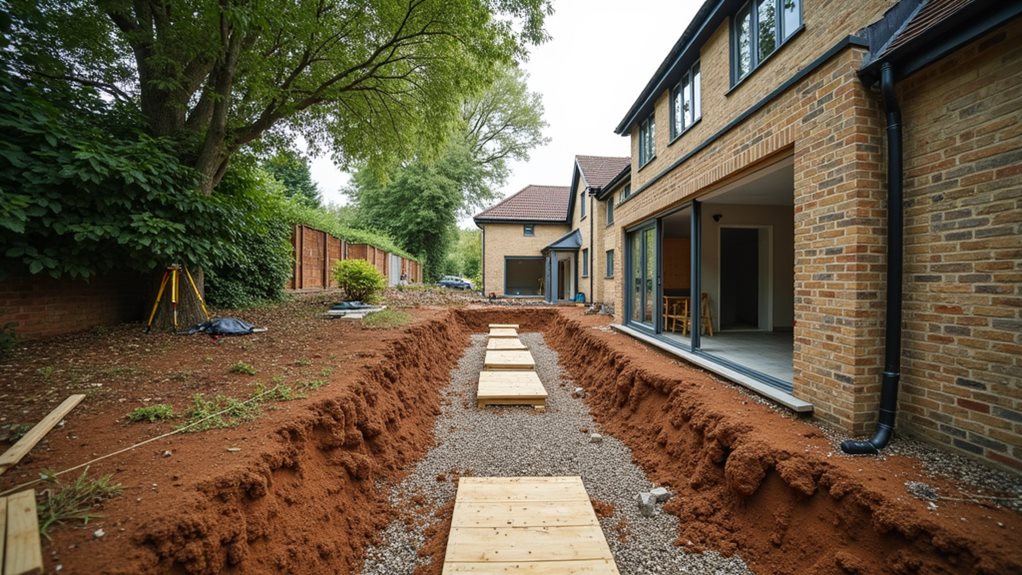
Site access and ground conditions present essential challenges that'll considerably impact your rear extension costs.
Your site logistics can become complex when dealing with narrow pathways, steep driveways, or limited access points. Excavation challenges often arise from unexpected ground conditions, potentially leading to significant cost variations in your project.
Understanding these factors early helps you plan better and avoid unexpected costs.
Working with experienced professionals who can assess your site's specific challenges is vital for accurate budgeting and successful project completion.
Your rear extension's complexity directly affects its cost, with unique structural elements like vaulted ceilings, split-level designs, or cantilevered sections requiring specialized engineering and materials.
When you're planning multiple floors or intricate architectural features, you'll need to factor in additional structural support, which often means hiring specialist contractors and engineers to guarantee safety and stability.
Multi-level extensions present particular challenges, as they'll need careful consideration of load-bearing requirements, staircase integration, and the relationship between different floor heights of your existing home and the new space.
When incorporating unique structural elements into your rear extension, you'll quickly discover that design complexity and architectural features can greatly impact your budget.
Your unique design considerations must account for both aesthetic appeal and structural integration challenges, especially when blending new elements with existing architecture.
Here's what makes structural elements particularly impactful on your budget:
These elements require expert installation and careful coordination between architects and engineers, ensuring your investment delivers both beauty and structural integrity.
Building a multi-level extension demands careful consideration of numerous design complexities that'll greatly impact both your budget and timeline.
When you're planning multi-level aesthetics, you'll need to navigate site conditions like uneven ground and existing garden levels, which can affect your design flexibility. Height restrictions under Permitted Development rules might limit your creative options, so you'll want to work closely with your architect to find innovative solutions.
Remember that structural considerations become more intricate with multiple levels, potentially requiring specialized engineering and additional groundwork.
You'll also need to guarantee your design complies with local building regulations while maintaining a cohesive flow between spaces. By carefully planning these elements early in your project, you can minimize unexpected costs and create a seamless integration with your existing home.
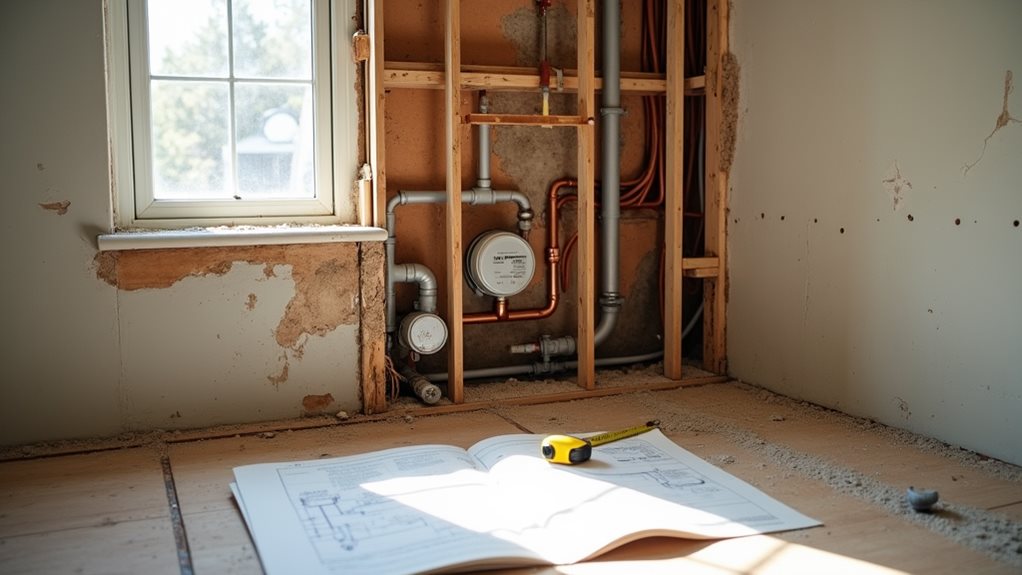
Making modifications to existing utilities during a rear extension project often represents one of the most technically challenging and cost-intensive aspects of the build.
You'll need to guarantee utility compliance while managing service coordination with multiple providers. When you're planning your extension, factor in costs for relocating sewage lines, adjusting electrical systems, and potentially upgrading water connections to meet current standards.
Beyond utility considerations, the cost of your rear extension can fluctuate dramatically based on your location. If you're in a major city like London, you'll face higher expenses due to increased urban demand and elevated labor costs, often 10-20% more than other regions.
You'll find that your location considerably impacts both material and labor expenses. In urban areas, you're looking at premium prices driven by high construction demand and increased living costs.
However, if you're in a rural area, you might benefit from lower labor rates and potentially reduced material costs. Keep in mind that while rural projects typically cost less overall, transportation expenses for materials could offset some savings.
Understanding these regional cost variations will help you set realistic expectations and budget accordingly for your extension project.
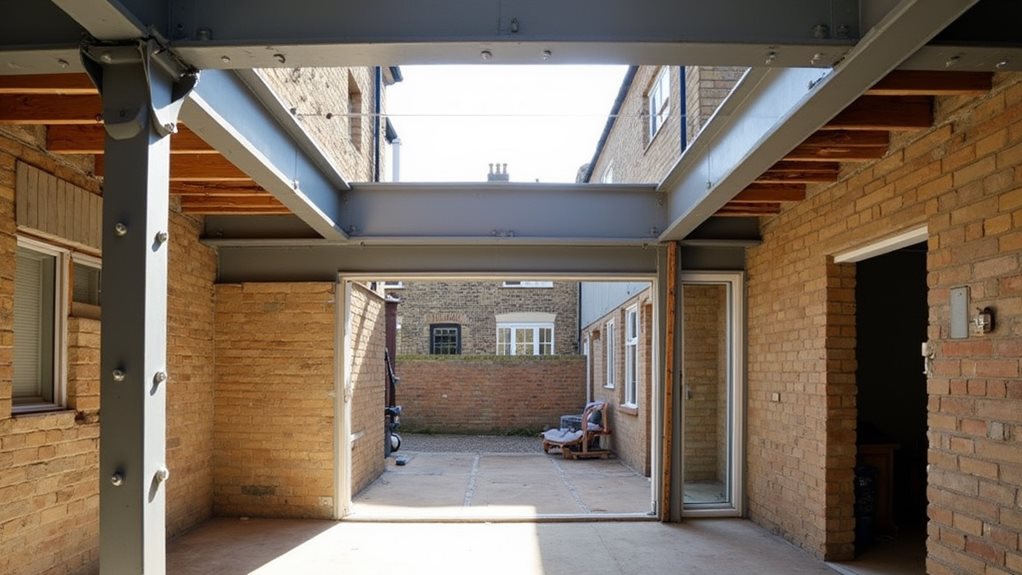
When planning a rear extension, structural considerations and load-bearing changes stand as critical factors that'll greatly impact both your project's safety and costs.
Proper load path analysis helps determine whether you'll need additional support posts or foundation reinforcement. You'll need to decide between various beam replacement strategies, which might include removing existing beams or adding new ones with appropriate support structures.
The selection of additional features and interior finishes stands as a pivotal factor that'll shape both the functionality and final cost of your rear extension.
When you're planning your space, you'll need to evaluate various glazing options and high-end finishes that can transform your extension into a truly personalized area. Smart features and acoustic insulation can greatly enhance your living experience, while custom designs and sustainability features help create a space that's uniquely yours.
You'll want to carefully weigh the impact of advanced lighting systems, specialized plumbing, and unique fixtures on your budget.
While luxury appliances and high-end materials might increase initial costs, they often provide better long-term value and durability.
As you plan your rear extension, you'll discover that costs can vary considerably based on these key factors. Recent data shows that homeowners typically spend between $150-$350 per square foot, with the national average hovering around $200. By carefully considering each element we've discussed, you'll be better equipped to create a realistic budget, avoid unexpected expenses, and achieve the extension you've envisioned for your home.